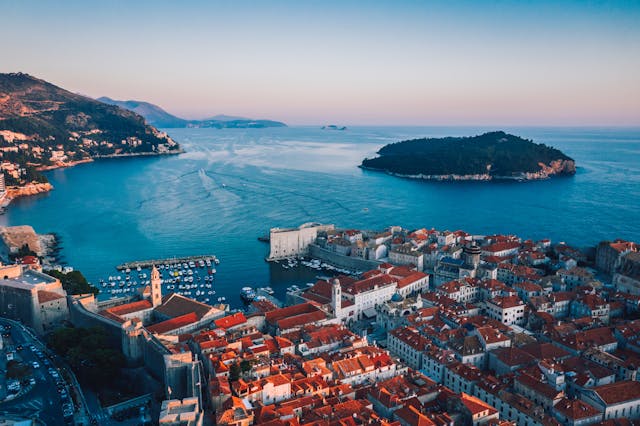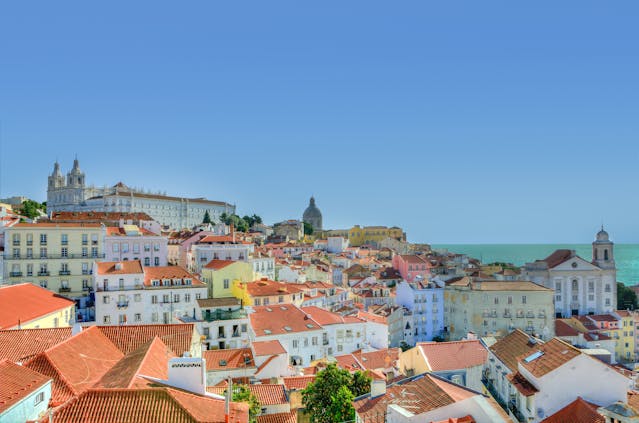Traveling is a chance to connect with the world’s rich history and diverse cultures. Iconic landmarks offer a window into this heritage, showcasing human ingenuity, artistry, and the essence of different eras. Here’s a guide to some of the most legendary landmarks you should see at least once in your lifetime.

The Great Wall of China
History and Significance
The Great Wall of China is one of the most remarkable feats of ancient engineering. Stretching over 13,000 miles, it was built to protect Chinese states from invasions. Constructed over several dynasties, it showcases the determination and skill of ancient builders.
Must-See Sections
- Badaling: This is the most visited section and is well-preserved with many facilities. It’s a great place for first-time visitors to experience the Wall’s grandeur.
- Mutianyu: Slightly less crowded than Badaling, Mutianyu offers stunning views and a chance to see the Wall as it stretches across the rugged terrain.
Travel Tips
- Best Time to Visit: The best time to visit is during spring (April to June) and autumn (September to October) when the weather is pleasant and the crowds are manageable.
- Practical Advice: Wear comfortable walking shoes, as there’s a lot of climbing involved. Also, consider taking a cable car to save some energy.
The Eiffel Tower, Paris
History and Design
The Eiffel Tower, completed in 1889 for the Exposition Universelle, is an iconic symbol of Paris. Designed by Gustave Eiffel, it was initially criticized but has become one of the most recognized structures in the world.
Experience
- Observation Decks: The Eiffel Tower offers breathtaking views from its observation decks. The second level provides a fantastic panorama of Paris, while the summit offers an unparalleled view.
- Dining: Enjoy a meal at one of the tower’s restaurants, such as Le 58 Tour Eiffel on the first floor or Le Jules Verne on the second.
Travel Tips
- Best Time to Visit: To avoid long lines, visit early in the morning or later in the evening. Sunset is a particularly magical time.
- Ticket Information: It’s a good idea to book tickets in advance to skip the lines.
Machu Picchu, Peru
Historical Background
Machu Picchu, the ancient Incan city nestled high in the Andes, was rediscovered in 1911. Its precise purpose remains a mystery, but it’s believed to have been a royal estate or a religious retreat.
Highlights
- Temple of the Sun: A beautifully preserved structure that offers insights into Incan astronomy and religious practices.
- Inca Trail: If you’re up for a challenge, the Inca Trail provides a scenic and historic route to Machu Picchu.
Travel Tips
- How to Get There: Most visitors take a train from Cusco to Aguas Calientes, then a bus up to Machu Picchu.
- What to Prepare: Bring sun protection, a water bottle, and wear comfortable shoes for the uneven terrain.
The Statue of Liberty, New York
Historical Significance
A gift from France in 1886, the Statue of Liberty symbolizes freedom and democracy. Designed by Frédéric Auguste Bartholdi and built by Gustave Eiffel, it has welcomed millions of immigrants to the U.S.
Experience
- Museum and Ferry Ride: Visit the Statue of Liberty Museum to learn about its history and take a ferry ride for stunning views of the New York skyline.
- Pedestal and Crown Access: For an additional fee, you can climb up to the pedestal or even the crown for a closer view of Lady Liberty.
Travel Tips
- Best Visiting Times: Early morning or late afternoon are ideal times to visit, avoiding peak tourist hours.
- Ticket Information: Reserve your tickets ahead of time, especially if you plan to visit the crown.
The Colosseum, Rome
Historical Overview
The Colosseum, also known as the Flavian Amphitheatre, was completed in 80 AD. It could hold up to 50,000 spectators and was used for gladiatorial contests and public spectacles.
Key Features
- The Arena Floor: Stand where gladiators once fought and imagine the grandeur of ancient Rome.
- The Underground: Explore the hypogeum, the network of tunnels and rooms beneath the arena.
Travel Tips
- Best Times to Visit: Visit early in the morning or late afternoon to avoid the peak crowds.
- Ticket Options: Consider purchasing a combined ticket for the Colosseum, Roman Forum, and Palatine Hill.
Taj Mahal, India
History and Significance
The Taj Mahal, built by Emperor Shah Jahan in memory of his wife Mumtaz Mahal, is an exquisite example of Mughal architecture. Completed in 1653, it’s renowned for its stunning white marble and intricate carvings.
Must-See Features
- Main Mausoleum: Admire the stunning marble dome and the delicate inlay work.
- Gardens and Reflecting Pools: The gardens and pools enhance the beauty of the Taj Mahal and provide great photo opportunities.
Travel Tips
- Best Visiting Times: Sunrise or sunset are the best times to visit for beautiful lighting and fewer crowds.
- Practical Advice: Dress modestly and be prepared for security checks. Also, note that large bags are not allowed inside.
Sydney Opera House, Australia
Architectural Details
The Sydney Opera House, designed by Jørn Utzon, is famous for its unique sail-like design. Opened in 1973, it has become a symbol of Sydney and a hub for the performing arts.
Experience
- Tours: Take a guided tour to learn about the building’s history and architecture.
- Performances: Check the schedule and attend a concert, opera, or theater performance.
Travel Tips
- Best Times to Visit: Morning tours are less crowded. For performances, book tickets in advance.
- Ticket Information: Tours and tickets for performances can be purchased online.
Christ the Redeemer, Brazil
History and Design
Christ the Redeemer, an iconic statue of Jesus Christ, overlooks Rio de Janeiro. Completed in 1931, it stands 98 feet tall and is one of the New Seven Wonders of the World.
Viewpoints
- Panoramic Views: From the base, you get incredible views of Rio and the surrounding landscape.
- Photo Spots: The arms of the statue provide a unique perspective for photos.
Travel Tips
- How to Get There: Take a train or van up Corcovado Mountain to reach the statue.
- What to Expect: Be prepared for crowds, especially during peak tourist season.
Conclusion
Visiting iconic landmarks connects us with different cultures and histories, offering unforgettable experiences. Whether you’re marveling at the Great Wall’s grandeur, soaking in the views from the Eiffel Tower, or exploring Machu Picchu’s mysteries, each site provides a unique journey through time. Start planning your visits and immerse yourself in these world treasures!
FAQs
An iconic landmark is a site recognized for its historical, cultural, or architectural significance. These landmarks often symbolize the heritage or achievements of a country or region and are renowned for their unique features and historical importance.
How can I choose which landmarks to visit?
Consider your interests and what aspects of history, architecture, or culture appeal to you. Research landmarks that align with your preferences and check travel guides or recommendations for popular choices.
When is the best time to visit iconic landmarks?
The best time to visit varies by landmark. Generally, spring and autumn offer pleasant weather and fewer crowds. Check specific landmarks for peak seasons or times to avoid large crowds.
Do I need to book tickets in advance for these landmarks?
For popular landmarks like the Eiffel Tower or the Colosseum, it’s advisable to book tickets in advance to avoid long lines and ensure entry. Some landmarks also offer timed entry or special tours that require prior booking.
What should I wear when visiting these landmarks?
Wear comfortable, weather-appropriate clothing and sturdy walking shoes, as many landmarks involve extensive walking or climbing. Also, dress modestly where required, such as at religious sites.
Are guided tours worth it?
Guided tours can provide valuable insights and historical context that enhance your visit. They often include skip-the-line access and ensure you don’t miss key features or stories about the landmark.
How can I get the best photos of these landmarks?
To capture the best photos, visit early in the morning or late in the afternoon for optimal lighting. Look for designated viewpoints and consider the time of day for unique perspectives.
Are there any special considerations for accessibility?
Many iconic landmarks have accessibility options, but it’s essential to check in advance. Some sites may have limited access due to historical or structural reasons.
Can I visit these landmarks with children?
Most landmarks are family-friendly, but it’s a good idea to check specific guidelines and features. Some sites may have age restrictions or special accommodations for children.
What are some tips for avoiding crowds?
Visit landmarks early in the day or during off-peak seasons. Avoid weekends and public holidays when possible, and consider visiting less popular sections or viewpoints to avoid the busiest areas.
How can I learn more about the landmarks before visiting?
Read travel guides, watch documentaries, or visit official websites for each landmark. Many landmarks also offer apps or audio guides with detailed information about their history and significance.
This blog post may contain affiliate links. If you click on one and make a purchase, I may earn a small commission at no extra cost to you.



